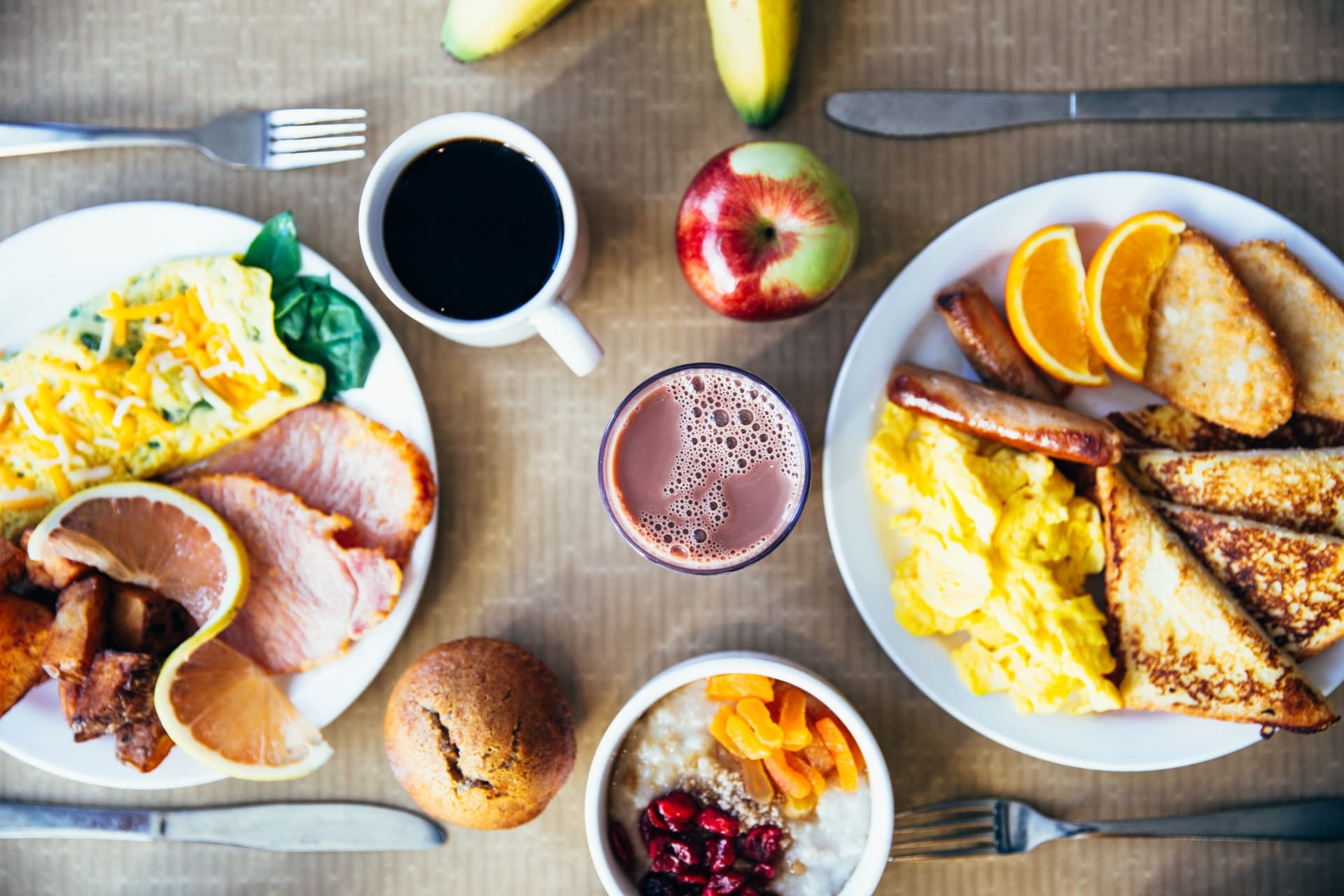One of the constant mantras of anyone giving weight loss advice is “Portion control!” The basic idea is that you don’t need to be as concerned with what you eat as long as you only eat moderate amounts of it.
It seems like simple enough advice: smaller servings equals fewer calories. And half a serving of French fries is better than no fries at all, right?
But the problem is that none of us know what a “portion” should really be anymore. Yes, we all help ourselves to a “portion” of dinner every night. Still, unless you have a food scale and a reference sheet, you may be grabbing more lasagna than you really need.
The first step in a portion control plan is re-learning what quantity of food you should be eating to maintain good health. When you know that, you can start reconfiguring your own portions accordingly and, with that, potentially lose weight in the process.
Distortion of portion sizes
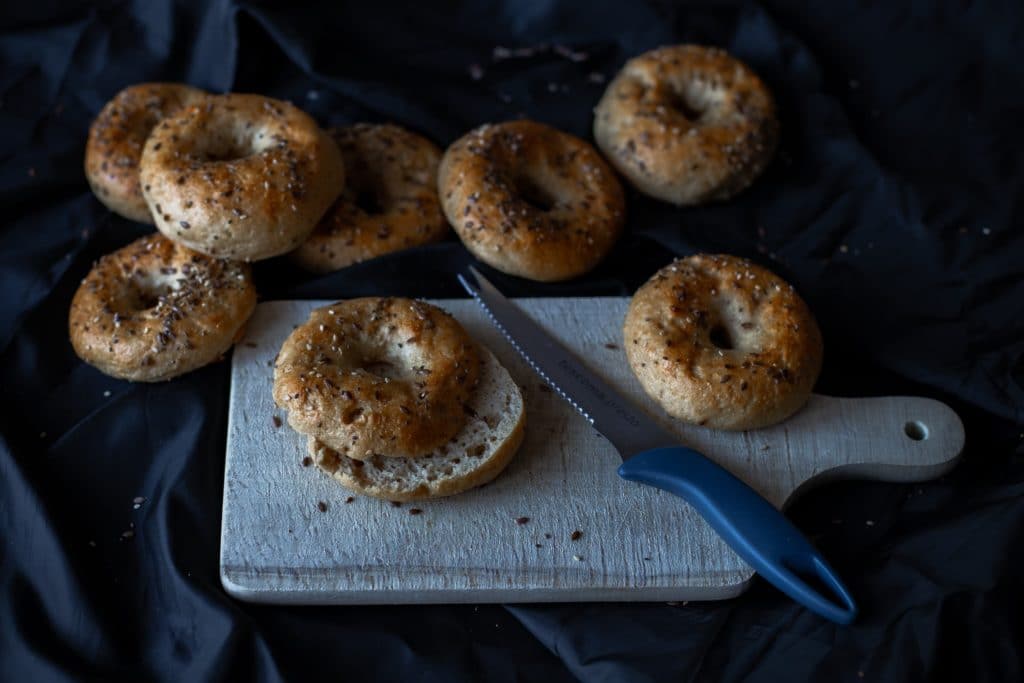
There is a ton of research that shows that portion sizes have increased steadily since the 1970s. Not only have ready-made meals and restaurant entrees gotten larger, but basic single-service items are bigger as well. One example is bagels, which have doubled in size!
Many of us get some of our ideas about portion sizes from commercial photos of food. Those delicious images of plates of food in ads are great for television. But settling in for a heaping plate of ribs with a mound of mashed potatoes and buttered carrots is not so great for our waistlines.
Restaurant meals are another place where portions are way out of sync with our actual needs. A study in 2018 showed that portions in full-service restaurants come in at an average of 1300 calories. When you remember that women over 50 really only need about 1800 calories per day in total, you realize how oversized a restaurant meal actually is.
Pasta is just one example of how restaurant portions rack up the calories. The recommended serving size for pasta is 1/2 cup. Yet when you sit down at your Italian restaurant and order up your favorite pasta dish, the serving size will likely be as much as 4 cups! That is eight times the recommended serving size and surely enough to feed a family of four.
The good news is, once you begin to understand portion size, you can still enjoy your favorite restaurant meals and stick to a weight loss program.
What is an appropriate portion size?
Most of us don’t really know what a portion of food should even be. We can guess from the serving sizes listed on food packaging, but even that isn’t ideal. Those measurements are just standard measures of a particular amount of that food. It’s not necessarily the right amount for you to eat.
For example, if you look at the label on a package of shredded cheese, it will say that the serving size is 1/4 cup. But if you measure that out and look at it, you’ll see that that’s actually a pretty big mound of cheese. Do you really want to sprinkle that much cheese on your taco? You could cut that portion by half and still get all the flavor boost but skip half the calories.
According to the National Institutes of Health, a person over 50 should eat a variety of foods in reasonable amounts. The daily breakdown looks like this:
| Food | Portion Size |
| Vegetables | 2 – 3 cups |
| Fruit | 1 1/2 to 2 coups |
| Grains | 5 to 8 ounces |
| Dairy | 3 cups (fat-free or low-fat) |
| Protein foods | 5 to 6 1/2 ounces |
| Oils | 5 to 7 teaspoons |
When you compare those numbers to serving sizes of prepared foods – or the serving sizes you’ve been enjoying – you might realize that your portions are not as close to the recommendations as you thought.
However, cutting back to that amount isn’t as crazy as it sounds at first. Remember, your stomach is only about the size of your fist. Trying to stuff it full of a huge restaurant meal is a crazy idea. Eating an amount of food designed to fit comfortably inside your stomach might be a more welcome change than you expect!
Having a list of how much food you should eat each day is a good starting point. However, the idea of measuring and weighing everything before you sit down to a meal doesn’t thrill anyone. So what can you do to make tracking portion sizes easier?
Tools to learn portion control
Fortunately, there are several simple tools you can use to re-learn what appropriate portion size should be and start to practice portion control.
Use Everyday Objects
The Mayo Clinic created a handy tool to help you judge portion sizes by comparing them to everyday items. You can eyeball your food and decide if it’s roughly the same size as the reference object.
Here is the list of objects. Each of these equals one portion of that kind of food.
| Food | Portion Size |
|---|---|
| Vegetables | Baseball |
| Fruits | Tennis Ball |
| Grains | Hockey Puck |
| Protein | Deck of Cards |
| Fats | Pair of Dice |
You can cross that check that with the NIH list to make meal plans. For example, you can have 2-3 baseballs worth of vegetables per day. You can plan on 2 hockey pucks of bread or pasta per day. You can spread 3 pairs of dice worth of butter on your food.
Use Your Hand
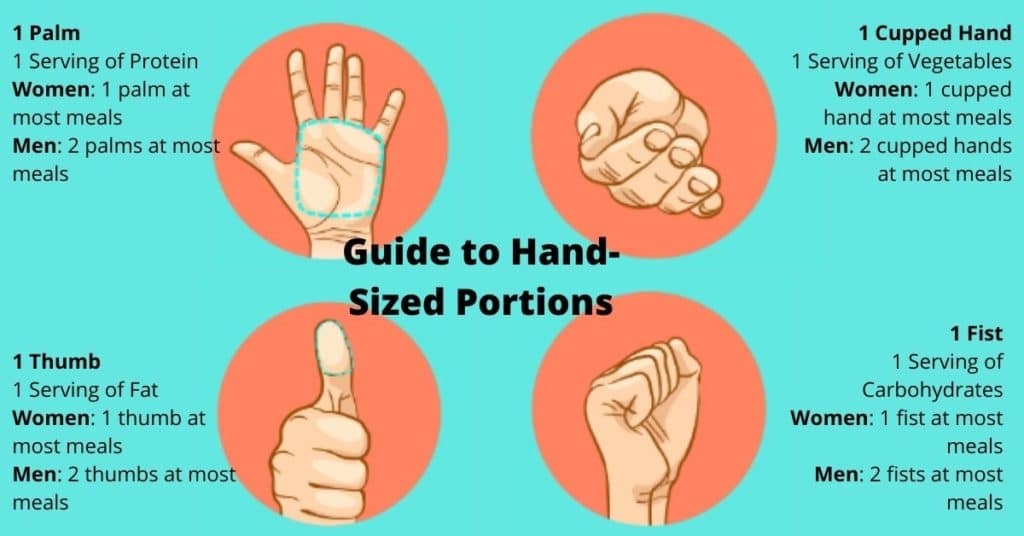
Your hand also provides a handy (Ha!) reference point for sizing portions. Plus, they’re with you everywhere you go! It’s much easier to eyeball a serving size of fat using your thumb than to imagine the size of a pair of dice.
Your fist is about the size of a one-cup measure, while your palm is the ideal size for a portion of protein. Your whole thumb is about the size of an ounce of cheese, and the tip is about the size of a teaspoon. You can hold about 1-2 ounces of nuts in your hand.
The hand-measuring trick is especially helpful at restaurants. When dining out, compare the servings on your plate to your hand and divide them up. Eat only the hand-sized portions and ask them to have the rest boxed up to take home.
Portion Control Containers
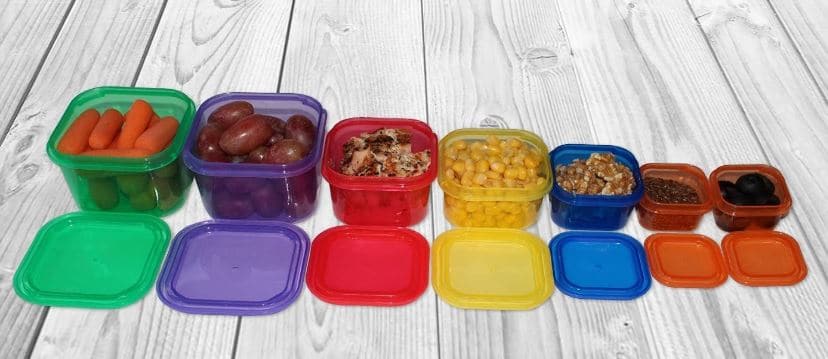
Some people have success regulating portion control by using portion control containers to divide up their daily food into right-sized amounts. This takes a little more preparation, which in some cases, isn’t such a bad idea.
These color-coded container sets are created in the appropriate portion size for vegetables, fruits, carbs, proteins, and fats. The bigger containers are for fruits and veggies, and the smaller ones are for grains, proteins, and so on.
This can be a great way to develop meals by mixing and matching the contents of containers to create a perfectly sized meal. Suppose you want chicken fettuccine for dinner. Fill up one carb container with cooked fettuccine and one protein container with shredded, chopped, or cubed chicken. Add one fat container full of butter and cheese, and you have a meal.
Add a side salad by including a veggie container filled with lettuce and chopped tomatoes, and cucumbers.
Portion control plates
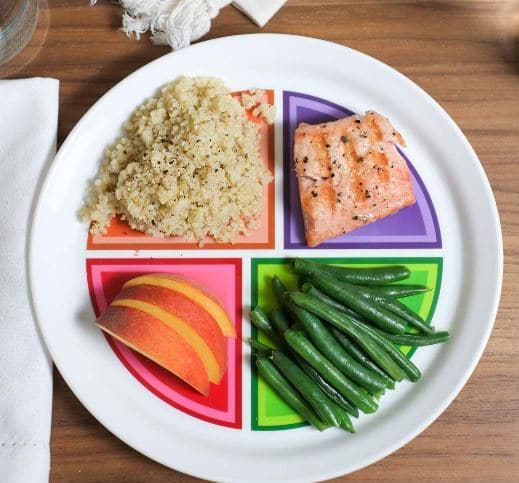
Another trick is to find portion control plates that are marked with portion measurements. You arrange your food according to the marking on the plate so that you have the right proportion of different dishes.
These plates have larger sections for veggies, a smaller one for grains, and another small one for protein.
You can serve yourself meals that match the portions on your plate, which ensures you eat more vegetables and scale back on the more calorie-dense items.
Final Thoughts
The key to portion control is planning your meals in advance. Make your shopping list reflect the proportions of food you need to eat during the week. Buy more veggies than fats. Get more lean protein items than processed grains. Having the right amounts of food in the house makes it easier to choose well at mealtimes.
If you can’t pre-plan your meals, you can still use the other handy tools discussed here to regulate portion control.
You can adjust your portions with just a few mindset changes and with some simple tools. After a while, the new portions will seem normal. You’ll automatically start serving yourself smaller meals and before you know it, you’ll start to see results on the scale.

